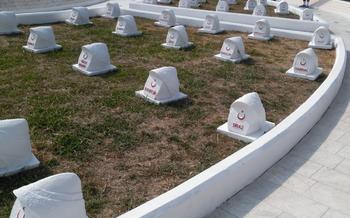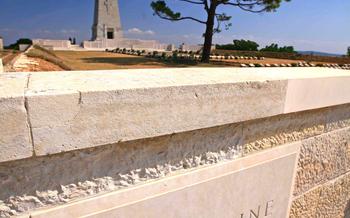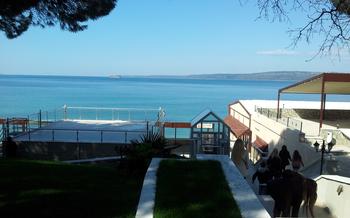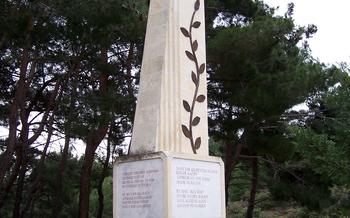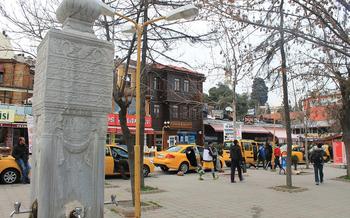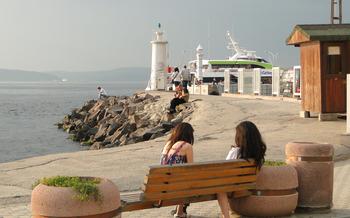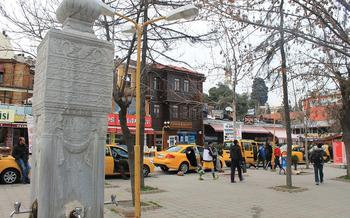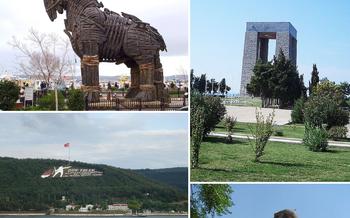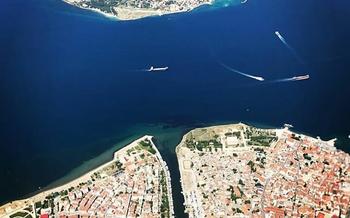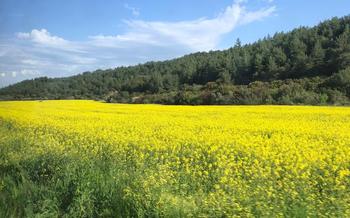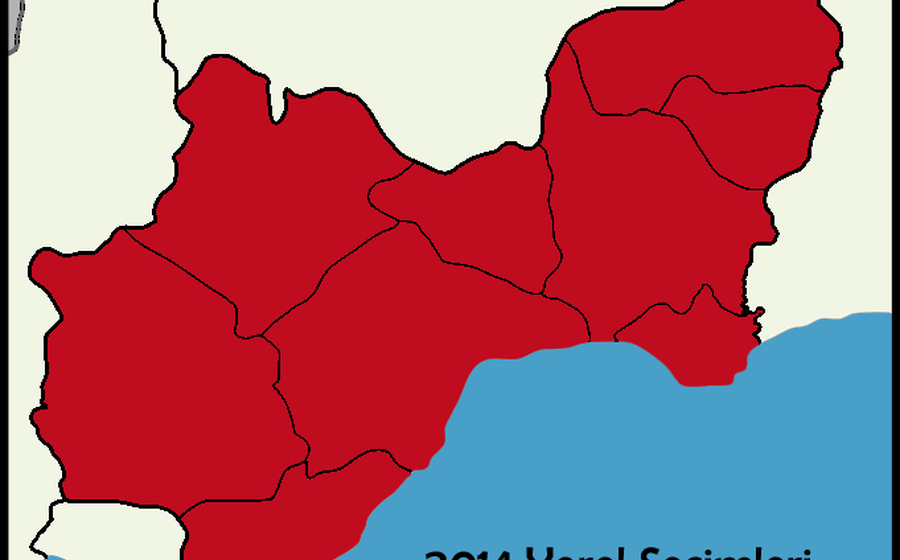
Gallipoli Historical National Park (a bit further away)
- Paying respects at the ANZAC Cove
- Commemorating the fallen at the Lone Pine Memorial
- Visitor Experience:
- Practical Information:
- Anecdote:
- Visiting the Kabatepe War Museum
- Walking the wartime trenches and tunnels
- Witnessing the Gallipoli Sunset
- Attending a commemorative ceremony
- Exploring the Nearby Town of Eceabat
- Hiking the Chunuk Bair Track
- Visiting the Beach Cemetery
- Enjoying the Local Turkish Cuisine
- Purchasing Souvenirs and Memorabilia
- Insider Tip: Planning Your Visit
Paying respects at the ANZAC Cove
Background: The ANZAC Cove holds immense significance for Australian and New Zealand troops as it marks the site where they first landed during the Gallipoli campaign. This cove became a symbol of courage, sacrifice, and the ANZAC spirit. Thousands of soldiers lost their lives here, and the cove remains a sacred place of remembrance for both nations.
Visitor Experience: Visiting the ANZAC Cove is an emotional and deeply moving experience. The atmosphere is solemn and respectful, with visitors often paying their respects in silence. The cove is home to several memorials and commemorative sites, including the ANZAC Commemorative Site, where visitors can learn about the history of the campaign and the sacrifices made by the ANZAC soldiers.
Practical Information: The ANZAC Cove is located on the Gallipoli Peninsula, a short distance from the town of Eceabat. It is accessible by road and by boat. Visitors are advised to dress respectfully and to be mindful of the significance of the site. Commemorative services are held annually on April 25, ANZAC Day, attracting thousands of visitors from around the world.
Anecdote: One poignant story associated with the ANZAC Cove is that of Simpson and his donkey. During the Gallipoli campaign, Simpson, an Australian stretcher-bearer, risked his life to rescue wounded soldiers from the battlefield, using his donkey to transport them to safety. His bravery and compassion earned him the nickname "The Donkey Man," and he became a symbol of the ANZAC spirit of mateship and selflessness.
Commemorating the fallen at the Lone Pine Memorial
The Lone Pine Memorial stands on a hilltop overlooking the Gallipoli Peninsula, a poignant reminder of the fierce battle that took place here during World War I. The memorial commemorates the Australian and New Zealand soldiers who fought and died in the Battle of Lone Pine, one of the most costly and significant engagements of the Gallipoli campaign.
Visitor Experience:
Visitors to the Lone Pine Memorial are immediately struck by its somber atmosphere and the rows upon rows of headstones, each representing a young life lost in the battle. The memorial features a central obelisk that bears the names of the fallen soldiers, many of whom have no known graves. The surrounding walls are adorned with bronze plaques that recount the story of the battle and pay tribute to the bravery and sacrifice of the ANZAC troops.
Practical Information:
The Lone Pine Memorial is located on Lone Pine Ridge, a short walk from the ANZAC Cove. It is open to the public daily, and admission is free. Visitors can explore the memorial at their own pace or join a guided tour to learn more about its history and significance. Commemorative ceremonies are held at the memorial on special occasions, such as Anzac Day and Remembrance Day.
Anecdote:
One of the most poignant stories associated with the Lone Pine Memorial is that of John Simpson Kirkpatrick, a stretcher bearer who risked his life to rescue wounded soldiers from the battlefield. Despite being wounded himself, Kirkpatrick made multiple trips across the bullet-ridden terrain, carrying soldiers to safety. His bravery earned him the nickname "the Man with the Donkey" and he became a symbol of the indomitable spirit of the ANZAC troops.
Visiting the Kabatepe War Museum
Background: The Kabatepe War Museum stands as a poignant testament to the Gallipoli campaign, showcasing a collection of artifacts, photographs, and documents that vividly depict the events that unfolded on this historic peninsula. Established in 1955, the museum offers a comprehensive insight into the strategies, battles, and sacrifices that shaped the course of the conflict.
Visitor Experience: Stepping into the Kabatepe War Museum is like embarking on a journey through time. Immerse yourself in the compelling exhibits, which narrate the events of the campaign from the perspectives of both the Allied and Ottoman forces. Discover the challenges faced by soldiers on both sides of the conflict, their acts of bravery, and the profound impact of the campaign on the nations involved.
Practical Information: The Kabatepe War Museum is located in the heart of the Gallipoli Historical National Park and is open to the public daily from 8:30 am to 5:30 pm. Admission fees are minimal, and guided tours are available for a more in-depth exploration of the museum's exhibits.
Anecdote: One particularly fascinating artifact on display at the Kabatepe War Museum is a Turkish artillery shell that was found embedded in the trunk of an olive tree. The shell serves as a poignant reminder of the ferocity of the fighting that took place in this region, and the enduring scars that the conflict left behind.
Walking the wartime trenches and tunnels
During the Gallipoli campaign, both sides constructed elaborate networks of trenches and tunnels to protect themselves from enemy fire and to launch attacks. Today, visitors to the park can explore these underground labyrinths, gaining a deeper understanding of the harsh conditions faced by the soldiers.
Venturing into the trenches is a truly immersive experience. The narrow passageways, the rough-hewn walls, and the remnants of wartime equipment create an eerie atmosphere that transports visitors back in time. It is easy to imagine the soldiers huddled in these cramped spaces, enduring the constant threat of shelling and gunfire.
The tunnels, on the other hand, offer a different perspective. Dug deep underground, they were used for communication, troop movements, and surprise attacks. Crawling through these claustrophobic tunnels gives visitors a sense of the claustrophobia and danger that the soldiers experienced.
Exploring the trenches and tunnels of Gallipoli is not for the faint of heart. The conditions can be challenging, and some of the tunnels are quite narrow. However, for those who are willing to venture underground, the experience is incredibly rewarding. It is a unique opportunity to gain a deeper understanding of the Gallipoli campaign and the sacrifices made by the soldiers who fought here.
Anecdote:
In one of the tunnels, I stumbled upon a small alcove that had been used as a makeshift hospital. There, I found a collection of medical instruments and supplies, as well as the faded remains of a Red Cross flag. It was a sobering reminder of the suffering that took place in these dark and cramped spaces.
Witnessing the Gallipoli Sunset
As the day draws to a close at Gallipoli, a sense of poignant beauty and profound reflection fills the air. The sun, like a celestial ember, slowly descends towards the horizon, casting a warm glow across the battlefields and memorials that dot the landscape. This is the Gallipoli sunset, a spectacle that has captivated visitors for generations.
Visitor Experience: Watching the Gallipoli sunset is an experience that stirs emotions and invites contemplation. As the golden orb sinks below the horizon, the sky transforms into a canvas of vibrant hues, mirroring the colors of the Turkish flag. The gentle sea breeze carries with it the whispers of history, as if the land itself is recounting the tales of bravery, sacrifice, and camaraderie that unfolded on these shores.
Practical Information: To fully appreciate the beauty of the Gallipoli sunset, find a vantage point that offers an unobstructed view of the horizon. Some popular spots include the ANZAC Cove, the Lone Pine Memorial, and the Çanakkale Martyrs' Memorial. Arrive early to secure a good spot and bring a blanket or chair to sit on.
Anecdote: I remember my first Gallipoli sunset vividly. As I sat on the shores of ANZAC Cove, watching the sun dip below the horizon, I couldn't help but feel a deep connection to the soldiers who had fought and fallen on this very ground. The sunset seemed to symbolize the passing of time, yet also the enduring legacy of the Gallipoli campaign. It was a moment of profound contemplation and a reminder of the importance of remembering and honoring the sacrifices made by so many.
Attending a commemorative ceremony
Background:
Gallipoli holds a significant place in Turkish history, and to honor the fallen soldiers and civilians, various commemorative ceremonies are held throughout the year. These ceremonies provide an opportunity for people to pay their respects, remember the sacrifices made, and promote peace and reconciliation. Some of the most notable ceremonies include:
-
ANZAC Day Ceremony (April 25): Held annually on April 25th, this ceremony commemorates the landing of the Australian and New Zealand Army Corps (ANZACs) at Gallipoli in 19It includes a dawn service, wreath-laying ceremonies, and military parades.
-
Çanakkale Martyrs' Day Ceremony (March 18): This ceremony marks the anniversary of the Çanakkale Martyrs' Memorial, built to honor the Turkish soldiers who lost their lives during the Gallipoli campaign. It features speeches, prayers, and a military parade.
-
Lone Pine Ceremony (August 9): Held on August 9th, this ceremony commemorates the Battle of Lone Pine, one of the most significant battles of the Gallipoli campaign. It includes a dawn service, wreath-laying, and a recitation of the Lone Pine Ode.
Visitor Experience:
Participating in a commemorative ceremony at Gallipoli is a moving and profound experience. It allows visitors to connect with the history and significance of the place, pay their respects to the fallen, and reflect on the horrors of war and the importance of peace. The solemn atmosphere, the heartfelt speeches, and the presence of veterans and their families create a powerful emotional impact.
Practical Information:
- Dates and times of commemorative ceremonies vary, so it's essential to check the official website of the Gallipoli Historical National Park for up-to-date information.
- Dress respectfully and maintain silence during the ceremonies.
- Photography is usually allowed, but be mindful of the privacy of others.
Anecdote:
In 2015, I had the privilege of attending the ANZAC Day ceremony at Gallipoli. As the sun rose over the Dardanelles, the sound of the Last Post echoed through the hills, creating a poignant and unforgettable moment. The ceremony brought together people from different countries, united in remembrance and a shared commitment to peace. It was a powerful reminder of the importance of learning from the past and working towards a future where conflicts are resolved peacefully.
Exploring the Nearby Town of Eceabat
Eceabat, a charming town nestled near the Gallipoli Peninsula, invites visitors to delve into its rich history and vibrant local culture. Once a strategic military base during the Gallipoli campaign, Eceabat has transformed into a welcoming destination that seamlessly blends its past with modern-day attractions.
Stroll through the town's narrow streets and discover hidden gems, including the Eceabat War Museum, which showcases artifacts and personal accounts from the Gallipoli campaign. Immerse yourself in the bustling atmosphere of the local markets, where you can find an array of fresh produce, handmade crafts, and souvenirs.
Indulge in the delectable flavors of Turkish cuisine at one of the many restaurants or cafes lining the town's streets. Savor the aroma of freshly baked pastries, tantalize your taste buds with traditional Turkish dishes, and enjoy the warm hospitality of the local people.
For a unique experience, embark on a boat tour from Eceabat to the Gallipoli Peninsula and witness the stunning coastal landscapes from a different perspective. As you sail across the Dardanelles Strait, let the stories of the past come alive and transport you back in time.
Eceabat offers a range of accommodation options, from cozy guesthouses to modern hotels, catering to every traveler's needs. Whether you prefer a tranquil retreat or a lively atmosphere, you'll find the perfect place to rest and recharge after your explorations.
As you bid farewell to Eceabat, take with you fond memories of a town that has preserved its heritage while embracing the future. Eceabat's unique blend of history, culture, and natural beauty will leave an enduring impression long after your visit.
Hiking the Chunuk Bair Track
Chunuk Bair, a hilltop overlooking the Dardanelles Strait, played a pivotal role in the Gallipoli campaign. Its strategic position made it a crucial objective for both the Allied and Ottoman forces. The Chunuk Bair Track, a challenging but rewarding hike, takes visitors to the summit of this historic hill, offering breathtaking views and a chance to reflect on the significance of this battlefield.
As you embark on the hike, the path winds through rugged terrain, passing by remnants of trenches, shell craters, and other relics of the fierce fighting that took place here. Along the way, interpretive signs provide insights into the military strategies and human cost of the campaign. The climb is strenuous, but the panoramic views from the summit make it all worthwhile.
At the top of Chunuk Bair, you can explore the New Zealand Memorial, a poignant tribute to the ANZAC soldiers who fought and died in this sector. The memorial stands as a reminder of the courage and sacrifice of these young men, who came from faraway lands to fight in a distant war.
Whether you're an avid hiker or simply seeking a deeper connection to history, the Chunuk Bair Track offers a unique and unforgettable experience. As you walk in the footsteps of soldiers who fought here over a century ago, you'll gain a profound appreciation for the sacrifices made during the Gallipoli campaign.
Visiting the Beach Cemetery
The Beach Cemetery, situated along the Gallipoli peninsula, holds a profound significance in the history of the Gallipoli campaign. Established in 1915, it serves as the final resting place for over 3,500 Commonwealth soldiers who lost their lives during the conflict.
Visitor Experience
Visiting the Beach Cemetery is a deeply moving experience. As you walk amidst the rows of white headstones, each bearing the name and story of a fallen soldier, a sense of tranquility and profound respect envelops you. The serene atmosphere allows for quiet contemplation and reflection on the sacrifices made by these young men.
Practical Information
The Beach Cemetery is easily accessible by foot or by vehicle. It is open to visitors throughout the year, and there is no admission fee. As a mark of respect, visitors are requested to maintain silence and refrain from disturbing the grounds.
Anecdote
During my visit to the Beach Cemetery, I encountered an elderly gentleman who had traveled from Australia to pay his respects to his great-uncle, who had fought and fallen at Gallipoli. As he stood there, tears streaming down his face, he shared stories of his great-uncle's bravery and sacrifice. It was a poignant reminder of the personal stories that lie behind each headstone, stories of courage, loss, and remembrance.
Enjoying the Local Turkish Cuisine
Tekirdağ, the region where Gallipoli is situated, is renowned for its culinary delights that blend Turkish, Balkan, and Aegean influences. Visitors to Gallipoli have the opportunity to savor a range of delectable dishes that showcase the region's rich culinary heritage.
Must-Try Dishes:
-
Grilled Meat: Tekirdağ is famous for its succulent grilled meats, particularly lamb chops and kebabs. These dishes are often seasoned with aromatic herbs and spices, imparting a unique flavor that tantalizes the taste buds.
-
Seafood: Given its proximity to the sea, Tekirdağ offers an array of fresh seafood dishes. Grilled fish, calamari, and shrimp are popular choices, often served with a squeeze of lemon and a drizzle of olive oil.
-
Meze: Meze, a selection of small plates or appetizers, is a cornerstone of Turkish cuisine. In Tekirdağ, popular meze dishes include hummus, baba ghanoush, stuffed grape leaves, and cacık, a refreshing yogurt-based dip.
Local Specialties:
-
Tekirdağ Köftesi: These meatballs are a local specialty, made with a blend of ground beef, herbs, and spices. They are typically grilled or fried and served with a tangy tomato sauce.
-
Çorba: Soups are an integral part of Turkish cuisine, and Tekirdağ offers a variety of delicious options. Lentil soup, tomato soup, and keşkek, a hearty wheat and meat soup, are among the local favorites.
-
Desserts: Tekirdağ's sweet treats are not to be missed. Baklava, a filo pastry filled with nuts and honey, is a must-try. Other popular desserts include künefe, a shredded filo pastry topped with cheese and syrup, and sütlaç, a creamy rice pudding.
Dining Recommendations:
-
Fine Dining: For a special dining experience, visit one of Tekirdağ's many fine dining restaurants. These establishments offer an elevated take on Turkish cuisine, often with a modern twist.
-
Local Eateries: To immerse yourself in the local culinary scene, venture into the small eateries and family-run restaurants. These places offer authentic Turkish dishes at reasonable prices.
-
Street Food: Don't miss out on Tekirdağ's street food scene. Sample freshly grilled kebabs, gözleme (stuffed flatbread), and simit (sesame-encrusted bread) from the many street vendors.
Insider Tip:
- Communal Dining: Embrace the Turkish tradition of communal dining by sharing dishes and trying different meze plates with your fellow diners. This is a great way to experience the local cuisine and connect with other food enthusiasts.
Purchasing Souvenirs and Memorabilia
Gallipoli offers a wide range of souvenirs and memorabilia for visitors to remember their visit. From traditional Turkish handicrafts to replicas of military artifacts, there's something for everyone. The Çanakkale Martyrs' Memorial has a gift shop where you can purchase books, postcards, and other souvenirs related to the Gallipoli campaign. The Kabatepe War Museum also has a gift shop with a variety of items, including replicas of medals, uniforms, and weapons.
In the town of Eceabat, you'll find many shops and stalls selling souvenirs, including magnets, keychains, and postcards. You can also find more unique items, such as handmade pottery and jewelry. Be sure to haggle with the vendors to get the best price.
One special souvenir that you might want to consider purchasing is a poppy. The poppy is a symbol of remembrance for the fallen soldiers of the Gallipoli campaign. You can find poppies for sale at the Çanakkale Martyrs' Memorial and the Kabatepe War Museum.
Insider Tip: Planning Your Visit
Background: Planning a visit to Gallipoli requires careful consideration to ensure a meaningful and respectful experience. Here are some insider tips to help you make the most of your trip:
Visitor Experience: To fully immerse yourself in the history and atmosphere of Gallipoli, plan to spend at least two days exploring the battlefields, memorials, and museums. This will allow you to visit the key sites at a leisurely pace and absorb the significance of the place.
Practical Information: To get to Gallipoli, you can either take a ferry from Çanakkale or drive along the scenic coastal road. Once there, you can purchase a Discovery Pass, which grants you access to all the major sites within the historical park. Guided tours are available, but you can also explore independently using the provided maps and information boards.
Anecdote: During my visit to Gallipoli, I had the opportunity to speak with a local historian who shared his personal connection to the events that transpired here. His insights and stories brought the history to life, making my experience even more profound.
